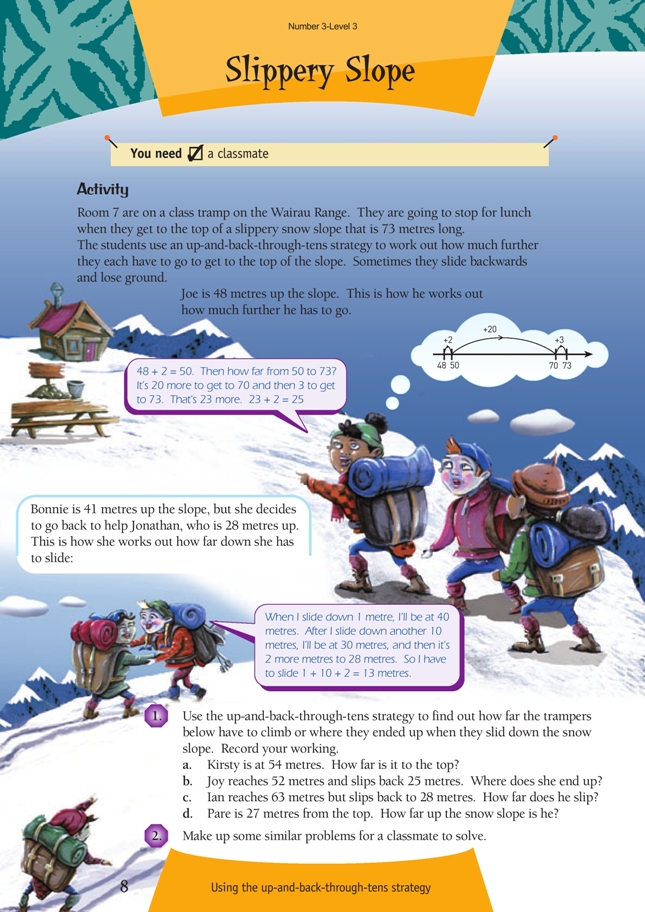This is a level 3 number activity from the Figure It Out series. It relates to Stage 6 of the Number Framework.
A PDF of the student activity is included.
Click on the image to enlarge it. Click again to close. Download PDF (242 KB)
use the "through tens" strategy to solve addition and subtraction problems
A classmate
This activity builds on The Strategy Strut by showing students another strategy they could use for addition and subtraction. For this activity, students need to be able to count forwards and backwards in tens and use mental strategies for addition and subtraction. They also need to know their addition and subtraction basic facts.
You may need to discuss “up and back through tens” with your students to make sure that they understand what it means. It’s actually “up and back through a multiple of 10”, but that is a bit long-winded. This strategy is similar to the tidy numbers or rounding and compensating strategies in The Strategy Strut.
This may be the first time the students have been introduced to solving problems by adding and subtracting using a multiple of 10. Encourage them to use and then visualise a number line so that they can see how they can add (or subtract) to a 10. (The notes for The Strategy Strut explain how to use number lines.) If the students have difficulty visualising a number line, get them to draw
it and mark in the jumps to tens. If they always jump to the next multiple of 10, encourage them to make larger jumps. For example, for 38 + = 73, instead of going 38 + 2 = 40 and then jumping to 50, 60, 70, and + 3 (that is, 2 + 10 + 10 + 10 + 3 = 35), encourage them to go 38 + 2 = 40 and then straight to 70 + 3 (that is, 2 + 30 + 3 = 35).
Discuss with the students whether visualising a number line helps them solve the problems mentally and have them explore other mental strategies they could use to solve the problems.
The students may misinterpret the language of the problems and add instead of subtract or vice versa. For example, in question 1d, the students may focus on “how far from the top” instead of “how far up the slope”.
Encourage the students to practise and extend the strategies they use to 3-digit numbers.
Answers to Activity
1. a. 19 m to the top. 54 + 6 = 60, 60 + 13 = 73, 6 + 13 = 19 m
b. 27 m from the bottom. 52 – 2 = 50, 50 – 20 = 30, 30 – 3 = 27 m
c. He slipped 35 m. 63 – 3 = 60, 60 – 30 = 30, 30 – 2 = 28, 3 + 30 + 2 = 35 m or
28 + 2 = 30, 30 + 33 = 63, 2 + 33 = 35 m
d. 46 m up the slope. 27 + = 73, 27 + 3 = 30, 30 + 40 = 70, 70 + 3 = 73, 3 + 40 + 3 = 46 m
2. Practical activity
